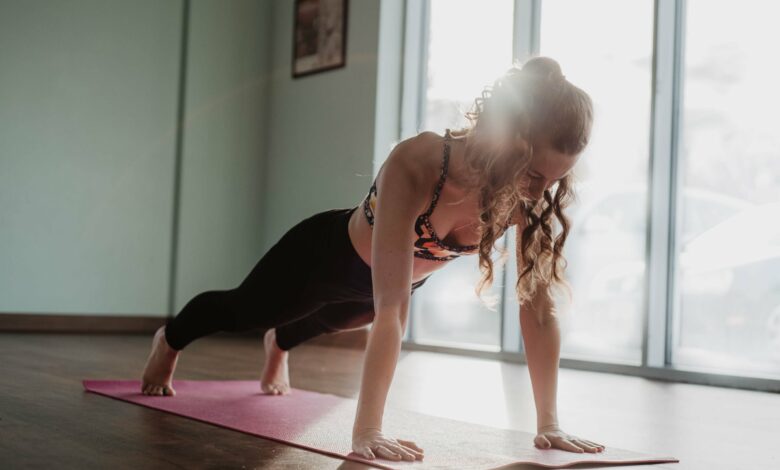
Static isometric exercise, such as wall sits, best for lowering blood pressure, finds analysis

Static isometric exercises—the sort that involve engaging muscles without movement, such as wall sits and planks—are best for lowering blood pressure, finds a pooled data analysis of the available evidence from clinical trials, published online in the British Journal of Sports Medicine.
But cardio (aerobic exercise); dynamic resistance training, such as squats, press-ups, and weights; high intensity interval training or HIIT for short (episodic short bouts of high intensity exercise interspersed with short periods of recovery at a lower intensity) are all effective, indicate the findings.
It may be time to review the current exercise guidelines for the prevention and treatment of high blood pressure, suggest the researchers.
Previously published research shows that exercise in general is associated with significant reductions in blood pressure, with aerobic exercise, such as walking, running, and cycling, the type primarily recommended for managing blood pressure.
But this recommendation is largely based on older data that exclude the newer forms of exercise, such as HIIT and isometric exercise, meaning that the current recommendations are probably outdated, suggest the researchers.
In a bid to potentially update information on the best form of exercise for controlling blood pressure, they trawled research databases looking for clinical trials reporting the effects of an exercise training intervention lasting two or more weeks on resting blood pressure.
The exercise interventions were classified as aerobic (cardio); dynamic resistance training; a combination of these; HIIT; and isometric exercises.
Healthy resting blood pressure was defined as a reading below 130/85 mmHg; pre-high blood pressure as 130–139/85–89 mmHg; and high blood pressure as 140/90 mmHg or more.
Systolic blood pressure, the first number in a reading, measures arterial pressure when the heart beats; diastolic blood pressure, the second number, measures arterial pressure between beats.
In all, 270 randomized controlled trials published between 1990 and February 2023 were included in the final analysis, with a pooled data sample size of 15,827 participants.
The pooled data analysis showed significant reductions in resting systolic and diastolic blood pressure after all the various categories of exercise, but with the largest falls in both systolic and diastolic blood pressure after isometric exercise training.
The reductions in blood pressure after aerobic exercise training amounted to 4.49/ 2.53 mmHg; 4.55/3.04 mm Hg after dynamic resistance training; 6.04/2.54 mmHg after combined training; 4.08/2.50 mmHg after HIIT; and 8.24/4 mmHg after isometric exercise training.
The rank order of effectiveness values for reducing systolic blood pressure were isometric exercise training (98%), combined training (76%), dynamic resistance training (46%), aerobic exercise training (40.5%) and HIIT (39%).
Secondary analyses revealed wall squats (isometric) and running (aerobic) as the most effective individual exercises for reducing systolic blood pressure (90.5%) and diastolic blood pressure (91%), respectively, with isometric exercise, overall, the most effective for reducing both blood pressure elements.
The researchers acknowledge that variations in the types of participants included across the clinical trials and differences in statistical and methodological processes and exercise interventions may have influenced the findings, and so should be interpreted in light of these limitations.
But they nevertheless conclude, “Overall, isometric exercise training is the most effective mode in reducing both systolic and diastolic blood pressure.”
“These findings provide a comprehensive data driven framework to support the development of new exercise guideline recommendations for the prevention and treatment of arterial hypertension.”
More information:
Exercise training and resting blood pressure: a largescale pairwise and network meta-analysis of randomised controlled trials, British Journal of Sports Medicine (2023). DOI: 10.1136/bjsports-2022-106503
British Medical Journal
Citation:
Static isometric exercise, such as wall sits, best for lowering blood pressure, finds analysis (2023, July 25)
retrieved 26 July 2023
from https://medicalxpress.com/news/2023-07-static-isometric-wall-lowering-blood.html
This document is subject to copyright. Apart from any fair dealing for the purpose of private study or research, no
part may be reproduced without the written permission. The content is provided for information purposes only.
Segue as Notícias da Comunidade PortalEnf e fica atualizado.(clica aqui)






